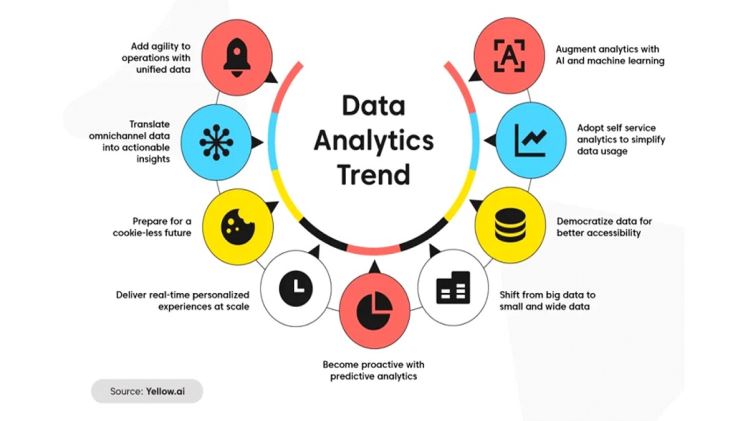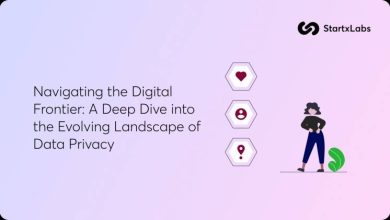Unraveling Big Data Insights in Web Development: The Role of AI-Enabled Data Analysis

With the advent of big data, the sheer volume and complexity of information available can be overwhelming. However, integrating artificial intelligence (AI) into data analysis processes has revolutionized the way insights are uncovered, paving the way for more informed decision-making in web development.
The Evolution of Data Analysis in Web Development
Traditionally, uncovering insights from big data required extensive manual effort and time-consuming processes. Data scientists and analysts would sift through mountains of data, relying on statistical tools and Excel sheets to make conclusions. However, the exponential growth of data in recent years has rendered these traditional methods inefficient and impractical.
Enter AI-enabled data analysis, a game-changer in the field.
Machine learning algorithms powered by AI can now sift through massive datasets at incredible speeds, identifying patterns, correlations, and anomalies that may elude the human eye. This expedites the analysis process and allows for a depth of insight that was previously unattainable.
The Role of AI in Uncovering Deeper Insights
AI-driven analytics revolutionize decision-making processes, from predicting user behavior and identifying trends to optimizing website performance and tailoring marketing strategies.
Web development expert Mona Zia points out how the transformative technology of AI in web development expedites the analysis of user interactions and browsing patterns and empowers developers to make data-driven decisions for enhanced website performance, conversion rates, and personalized user experiences.
She suggests AI data analysis tools like Deepsheet, Outset.ai, Jeeves, and Abacus.
Another notable contribution from AI is in predictive analytics. Machine learning models can analyze historical data to predict future trends and user behaviors, enabling developers to address issues or capitalize on emerging opportunities proactively.
For example, e-commerce platforms can use AI to analyze user behavior, predict purchasing patterns, and personalize user experiences. This not only enhances customer satisfaction but also improves the overall efficiency of the platform by tailoring content and recommendations based on individual preferences.
Moreover, AI can identify hidden correlations within datasets that might go unnoticed through traditional analysis methods. This ability to uncover non-obvious relationships can lead to innovative solutions and optimizations in web development strategies.
The Changing Landscape of Data Analytics Education
As the demand for professionals who can harness the power of AI in data analysis grows, so does the need for specialized education. More importantly, professionals who can demonstrate real-world experience in unlocking big data insights with AI can be a competitive advantage.
As a result, data scientists and analysts are no longer solely reliant on traditional academic paths. Data analytics bootcamps have emerged as a popular and effective way for individuals to gain the necessary skills in a shorter timeframe.
These bootcamps offer intensive, hands-on training in data analytics, often incorporating AI and machine learning components. Participants can acquire practical skills in programming, data visualization, and machine learning, making them well-equipped to handle the challenges posed by big data in web development.
Students attending a data analysis bootcamp should be thrilled about integrating AI in their field as it brings numerous insights and advantages. AI’s speed and efficiency enhancements in data analysis enable students to extract deeper insights from large datasets in real time, fostering quicker and more accurate decision-making.
In web development, students can explore cutting-edge tools like AI-powered chatbots and savvy content generation, experiencing firsthand how AI revolutionizes customer support and streamlines content creation.
The application of AI in data analysis equips students with skills in predicting user behavior, optimizing websites, and tailoring marketing strategies based on data-driven insights. The exposure to AI-driven testing tools also prepares them for the industry’s move toward more sophisticated testing methodologies.
The shift towards more accessible and specialized education aligns with the evolving nature of the industry. Since many companies increasingly value practical skills and real-world experience, this opens doors for a diverse range of individuals to enter the field, contributing to a more inclusive and innovative data analysis workforce.
Overall, integrating AI in data analysis and web development enhances their skill set and positions them as contributors to innovation in these evolving fields.
How Companies are Embracing AI-Enabled Data Analysis
Integrating AI into data analysis has become a strategic imperative in the corporate arena. Companies are investing in advanced analytics tools and hiring professionals with expertise in AI-driven data analysis to gain a competitive edge.
Cloud-based platforms like AWS, Azure, and Google Cloud offer scalable and efficient solutions for implementing AI-enabled data analysis. These platforms provide various services, from data storage to machine learning model deployment, making it easier for companies to adopt and integrate AI into their existing workflows.
Additionally, the rise of data science platforms that facilitate collaboration and streamline the end-to-end data analysis process has further accelerated the adoption of AI in web development. These platforms often come equipped with pre-built machine learning models and tools for data preparation, allowing developers and analysts to focus on deriving meaningful insights rather than getting bogged down by technical intricacies.
At the same time, data-driven enterprises acknowledge the importance of vast data collection; the challenge lies in deriving meaningful insights and applying them contextually. With their scalability limitations and inability to provide real-time insights, traditional analytics tools are deemed inadequate in today’s fast-paced business environment.
He said failure to embrace AI-based analytics may result in inefficient use of big data and hinder a business’s ability to compete in the digital era. Organizations can position themselves for success in the dynamic digital business landscape by fostering a culture of AI-driven decision-making and ensuring data reliability.
The Future of AI-Enabled Data Analysis in Web Development
Looking ahead, the synergy between AI and data analysis is poised to redefine the web development landscape continuously. The ongoing evolution of machine learning algorithms will lead to even more sophisticated analytical capabilities, enabling developers to extract nuanced insights from increasingly complex datasets.
Integrating AI in web development is not just a trend but a transformative force shaping the industry’s future. As AI continues to evolve, developers and analysts must stay abreast of the latest advancements and acquire new skills to harness the full potential of these technologies.
The impactful combination of AI and data analysis has ushered in a new era in web development. Uncovering profound insights from big data in real-time enhances decision-making processes and fuels innovation and competitiveness.
As education becomes more accessible through data analytics bootcamps and companies increasingly integrate AI into their workflows, the future promises a web development landscape where data-driven insights are not just an advantage but a necessity. Embracing AI-enabled data analysis is no longer a choice but a strategic imperative for those who seek to thrive in the modern workplace.
Author Bio:
Anjani Vigha is a technical as well as creative content writer at Thinkful, a Chegg service. She is an outgoing person, and you will find her near books, arts and explore the miraculous world of technology. Connect with her on LinkedIn or Twitter.




